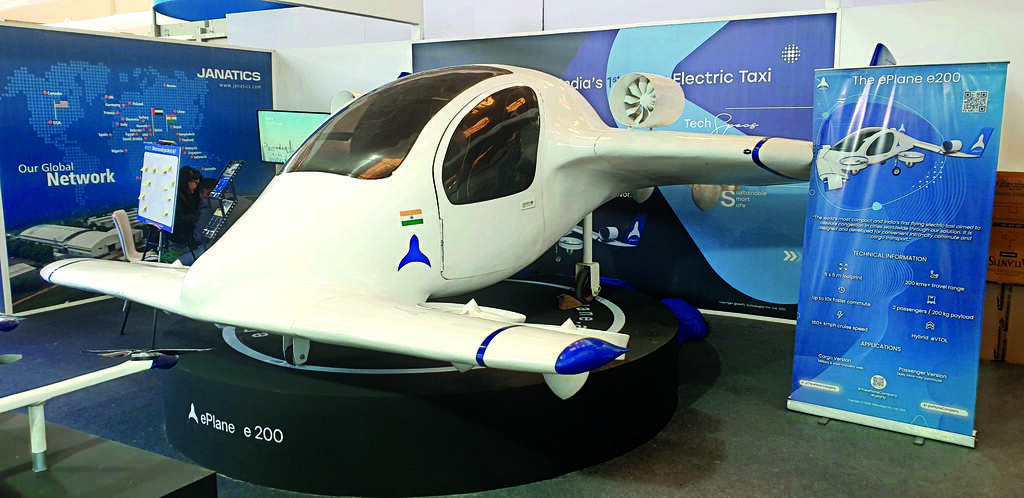
Imagine travelling from MG Road to Kempegowda International Airport (24km by air) in just 11 minutes by an electric flying taxi costing roughly twice the fare of regular taxi. At Aero India, The ePlane Company‘s non-flying prototype model grabbed the attention of many, especially in the backdrop of Bengaluru’s notorious traffic jams.
Incubated at IIT Madras, The ePlane Company is founded by professor Satya Chakravarthy. “Designed for up to 10X faster intra-city commute and cargo transportation, we aim to alleviate on-road traffic congestion in cities through our flagship product ePlane e200,” he said.
“As an Urban Air Mobility (UAM) startup, we are on a mission to transform the way people commute by offering a safe and sustainable flying experience and also to save a significant amount of time,” said Chakravarthy.
Stating that this was India’s first compact electric flying taxi, he pointed out that once fully charged, it can run up to 200km range. “It is up to 10X faster than road-based vehicle like cabs and has a 160kmph cruise speed and a top speed of 200kmph. It can carry two people, including a pilot, or 200kg luggage,” said Chakravarthy.
“It will have two variants: Cargo (military & inter-industry uses) and daily intra-city commute,” he said. The aircraft design and prototypes have to now go through the certification process with DGCA .
Launch plan
Bengaluru is likely to be among the first few cities where e- flying taxis will be launched, subject to DGCA approvals by 2024-2025. Vishnu Ramakrishnan, founder’s office, The ePlane Company, said: “Electric vertical take off and landing (eVTOL) aircraft are better than traditional helicopters due to two reasons – cost and access. For instance, heli-taxis are expensive as they run on aviation turbine fuel (ATF) and also have high maintenance.”
For helicopters, Ramakrishnan said, a helipad is required and one may get stuck in traffic while going to catch a heli-taxi. “Our fare will be lower since it runs on battery and has less maintenance. It can take off and land from apartment rooftops or open ground as it does not require extensive infrastructure such as a helipad. We need only under 1,600 sqft area for take off and landing,” he added.
Also Read:
